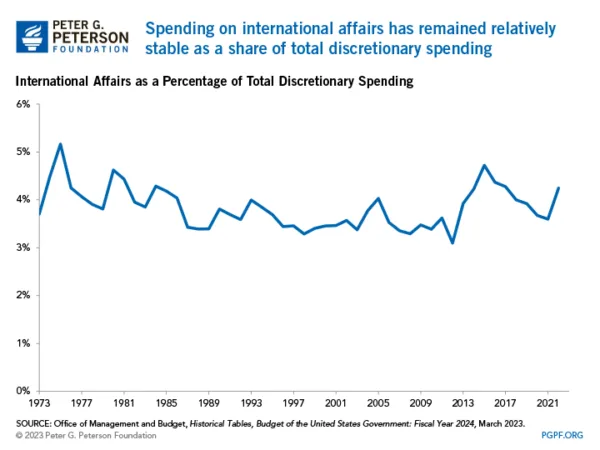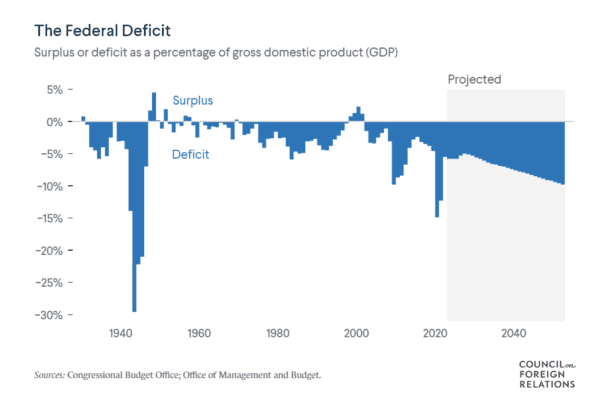By Giovanni Coeli
In light of the upcoming American presidential election and the potential reinstatement of former President Trump, it becomes increasingly important to look at the significance of an often overlooked component of U.S. federal spending, the International Affairs Budget. This proportion of the total government expenditure sustains American diplomacy initiatives, funds the State Department (the executive department of the U.S. federal government that handles the country’s foreign policy), and supports the U.S. Agency for International Development (USAID) and the Peace Corps.
The International Affairs budget is thus responsible for funding essential programs related to global diplomacy and development. The budget helps prevent conflicts, provides emergency relief to countries affected by natural disasters and pandemics, and promotes overall stability around the world. As Former Secretary of Defense Chuck Hagel stated, it is not aid, “it’s an investment.”
Contrary to popular belief, however, only a small portion of the U.S. government’s overall budget is allocated to international relations. Over the previous 50 years, appropriations for foreign affairs have composed a small and rather constant portion of discretionary spending.

Funds officially approved by the president and Congress range from 3.1 percent to 5.2 percent of the total. The variations in expenditure reflect the global problems that the US has occasionally faced, such as the events of September 11, 2001, the Ebola outbreak in 2013, and the Russian invasion of Crimea in 2014. When considered in the context of the total federal budget and taking into account the occasional increases, the international affairs outlays account for less than 1 percent.
While the Biden administration released an ambitious FY24 budget aimed at addressing a wide range of challenges countries face worldwide (including increased humanitarian aid), this outlook may change after the upcoming elections. Republicans have long pledged to reduce government outlays, and with Trump’s “America First” agenda, this effort may gain even more momentum. A further issue impeding foreign policy expenditure is the magnitude of the U.S. national debt as a percentage of GDP, which has reached an all-time high since World War II. U.S. debt is nearly as large as the entire economy as a whole and is expected to increase over the next thirty years. According to many economists, this might soon increase the risk of a financial crisis and limit how much the government spends on vital programs, including those funded by the International Affairs Budget.

The budget is a backbone of stability in a period marked by geopolitical volatility. Amidst rhetoric of fiscal restraint, it is imperative to recognize the dividends that adequately funding the budget yields.
The International Affairs Budget enhances soft power, a country’s ability to influence others without coercive pressure, and is pivotal in navigating complex challenges that transcend national borders.
Hard data shows that U.S. assistance has a remarkable track record of achieving global development outcomes. Thus, sustaining foreign affairs is not just a matter of prudent fiscal management; it is a strategic investment that ensures a safer and more stable future for all.
The United States has consistently allocated a significant portion of its federal budget toward defense. In fact, in 2022, it allocated a larger amount to it than the combined budgets of the next ten countries. However, it is crucial to acknowledge the importance of foreign relations and prioritize the International Affairs Budget accordingly. With it, the United States can reaffirm its role as a global leader committed to addressing the shared challenges of our time. This being said, much dialogue, cooperation, and principled engagement will be needed to achieve this goal.
Cover image by Vitalii Barida, retrieved from iStock.







